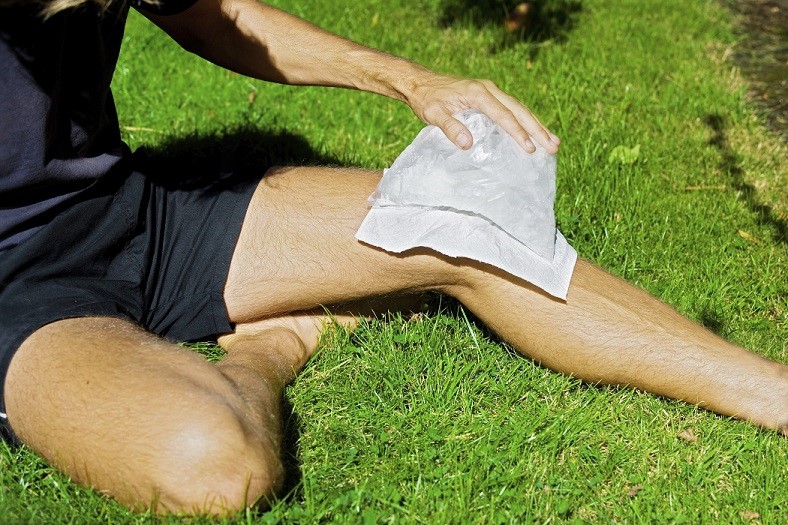Treatment Options
There are many things you can do to help relieve your knee pain and keep you active and mobile. The best thing to do is talk to your doctor about which options will benefit you most. To help you discuss treatments, here are some of the options your doctor may discuss with you, depending on your condition and pain levels.
-
Weight management and exercise
When you speak to your doctor about treatment for joint pain, he or she may recommend a balanced diet to help you achieve and maintain a healthy weight. Additional pressure on weight-bearing joints like the knees may aggravate any joint problems you may have, so by reducing your weight, you may reduce this pressure and the pain it causes. It may also reduce the risks of surgery if this is necessary.
Exercise can also be an important part of treatment for arthritis or other joint issues. Not only is it good for you, it will also help you maintain mobility in affected joints. Your doctor may discuss an exercise program for you or refer you to a physiotherapist.
-
Rest and joint care
Often, the most effective way to improve your condition is simple rest and rehabilitation.
- Rest – short-term bed rest may help reduce joint inflammation and pain. It may be especially useful when several joints are affected by arthritic conditions, and fatigue is part of the problem.
- Heat and cold therapy – depending on the type of arthritis you’re experiencing, and which joints it affects, heating pads or ice packs can help relieve swelling, maintain mobility and reduce pain. You doctor can advise on which specific therapy is right for you.
- Assistive devices – using canes, walkers, raised toilet seats and other assistive devices can help preserve your joints and make everyday tasks much easier.

-
Physiotherapy
Your doctor may recommend or refer you to a physiotherapist to help you manage your knee pain. Your GP can provide guidance on applying for funded visits to a private physiotherapist or you can refer yourself directly. If you have private physiotherapy health cover / extras, you may be able to recover some of the costs of treatment. Check with your health fund for information on your level of coverage.
A physiotherapist will discuss and assess your condition and suggest simple exercises that will preserve the strength of muscles around affected joints and help maintain your mobility.
For example, they may suggest the best ways to move positions, such as from sitting to standing – and if you have been recommended a walking aid, like a stick or frame, they will show you the best way to use it. A physiotherapist can also teach you appropriate exercises which may include activities such as exercising in warm water pools. The buoyancy takes the pressure off the joint which may mean you can exercise with less pain and do walking in the pool. A physiotherapist will teach you appropriate exercises.
-
Medication
There are many different medications used to treat arthritis, depending upon the type and severity of your condition, please consult your GP about the type of medicine which is most appropriate for your pain1.
-
Knee replacement surgery
If arthritis or knee injury is limiting your everyday activities, such as walking and bending, and you still experience pain when resting, your doctor may recommend knee replacement surgery. It may improve the stiffness in your knee that limits your ability to move or lift your leg.
Knee replacement surgery is considered after careful diagnosis of your joint problem. If anti-inflammatory drugs or other treatments, such as physiotherapy, are providing little pain and mobility relief, you may wish to discuss this option with your doctor.

Learn about knee replacement
1. “What is arthritis”, Arthritis Australia website (https://arthritisaustralia.com.au/wordpress/wp-content/uploads/2018/02/ArthAus_WhatisArthritis_1805.pdf) accessed January 2019.
